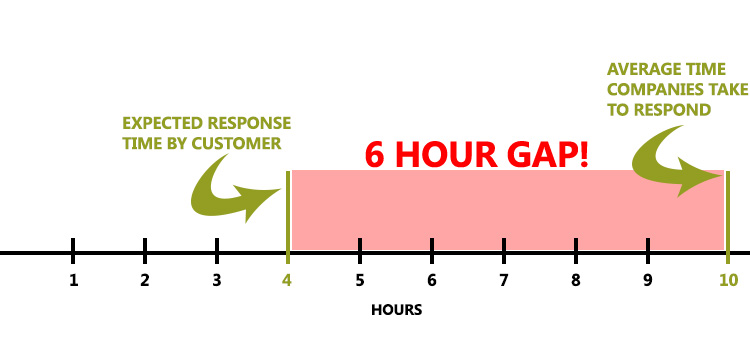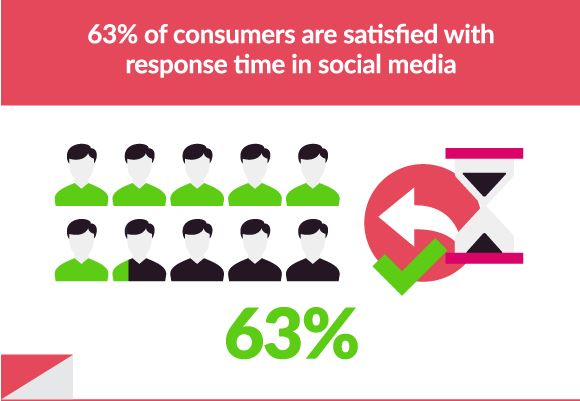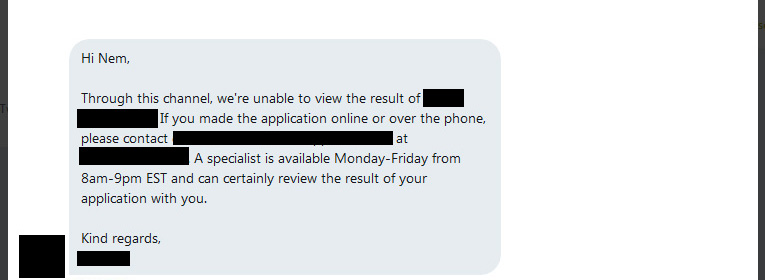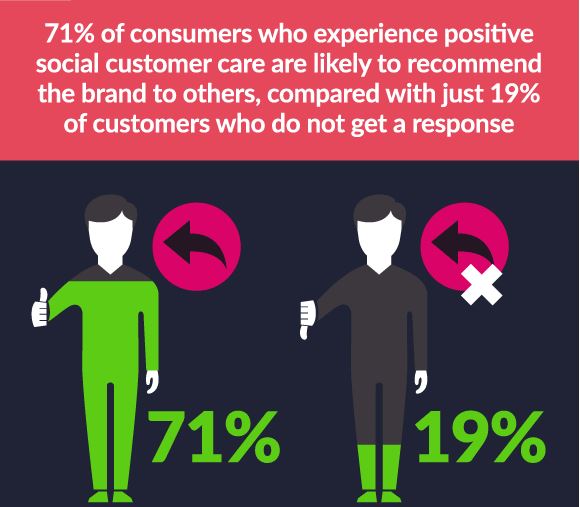When you think of social media for business purposes what comes to mind? Most likely marketing or outreach efforts. As business professionals we’ve been conditioned to associate social networks with sales and marketing. In reality, social platforms can be much more than that. They can provide a critical element to your customer service efforts. Engaging existing customers with real-time, genuine support can result in 20%-40% higher spend from those individuals [Source: Social Media Today].
What is preventing small businesses from tapping into this source? There are a few things which I believe are limiting the success of social as a customer service tool.
Most Business Just Post, Don’t Listen
Hands up if you’re guilty of just scheduling posts to your profile and calling it a day 🙌
I know you can’t see but my hands definitely went up. I use to post much more than I use to interact. My biased belief lead me to think that sharing my own posts and “awesome” content was the best thing to do. That everyone is going to love it with little effort. I am sure many of us (personally and professionally) have fallen into this trap. But how do we expect others to engage with our content when we never engage back?
[epq-quote align=”align-right”]54% of customers prefer social messaging channels for care over phone or email. [Source: Adweek][/epq-quote]
Social media is about building relationships, much like social gatherings (whether business or personal) are for building networks and connections. Your organization (or you) will only get back as much as you contribute. If you only contribute posts and updates, that is what will reciprocate. If you spend the time to respond, engage, comment and interact with your customers online there is a higher likelihood that they will do the same!
Response Time is Quite Slow
A while back I put together a post talking about timeliness and how important it is in the digital world. The biggest disconnect in online support efforts come from customer response expectations to actual time it takes for an organization to respond. According to a SproutSocial report, customers expect a response online within 4 hours while organizations take about 10 hours (on average) to respond. That is a big, big difference!
I get it – hanging around social media all day isn’t the most productive way to spend your workday. Providing timely responses is no easy task. Based on recent research, just over half of customers we’re happy with response times (that leaves a lot of room for improvement):
Fortunately there are some strategies that can help you achieve timely response times while remaining productive!
- Setup Notifications: most of us use a constantly connected smart device. Setup notifications anytime you receive a direct message, mention or ping on a social network.
- Schedule Periodic Response Times: notifications can get overwhelming. Prioritize their importance and come up with a schedule to check your social network activity at multiple times throughout the day (even if you don’t receive any notifications)
- Add a Chatbot: getting overwhelmed with general questions or inquiries? Explore chatbots that could help answer basic information and guide customers to the right venues for any complex questions (depending on your capabilities and comfort, you can setup chatbots to answer complex inquiries as well).
Responses Aren’t Helpful
This is a tricky obstacle to overcome. I recently engaged a brand through their Twitter support handle (special account just for support) and was a bit disappointed with their response:
It’s not a problem that they directed me to a different help centre, it’s the fact that they claimed to have “easy help” online. All I wanted to know was the status of my application (which, for a well known brand should not be a problem to share across departments). I did not request any personal information or confidential data – all I wanted to know was the status of the application.
The problem in this particular case is the praise of their online support vs. my experience. I needed a quick answer on application status (hence why I avoided customer support phone lines with long wait times) and did not receive it. I applied online but can’t get support online? Hhhmmmm.
If you plan on providing support through online channels go beyond the basics. Even if you ask someone to wait a period of time while you look into something might be better than completely shifting them elsewhere immediately. Why? Because responding in a timely manner and putting in effort:
- Illustrates Consideration: you’ve responded and taken the time to look into something. Although the solution may not have been presented in the immediate interaction it showed that you’re attentive and responsive.
- Establishes Social as the Go-To Support Tool: instead of just brushing someone off to a phone number (and discouraging them from using the online support channels) you showcase that the social profile is indeed used for support and that customers can expect a timely response.
Alright, enough of reasons as to why social media support is NOT effective. It takes a lot of effort but it is absolutely worth it. Introducing social networks as a support tool initially may take some investment (time and money), but in the long run you can turn existing customers into brand advocates.
If you take the time to listen to customers online it will allow your business to learn more about the problem and in turn help solve not only the service request on hand but similar future requests.




